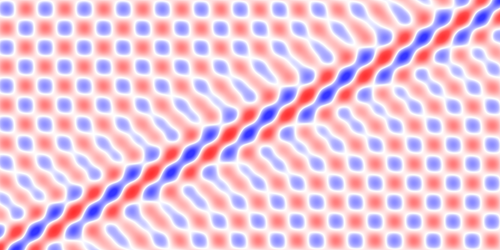Schrödinger Win for Extreme Waves
Suddenly appearing “rogue” waves—standing as high as tens of meters—have terrified sailors for centuries. In the 1980s, physicists found a set of solutions to the nonlinear Schrödinger equation that describes these swells, which are seen not only in water but also in light beams and plasmas, and have since applied those solutions to single-direction rogue-wave-generating systems. Now Amin Chabchoub from Kyoto University, Japan, and his colleagues show that the solutions can also capture rogue wave formation in counterpropagating wave systems [1]. These systems better represent those in the real world.
For their experiments, the researchers placed a mechanical wave generator at one end of a 30-m-long rectangular tank and a wall at the other end. Setting the wave generator going, the wall acted as a wave reflector, leading to the formation of standing waves in the tank. Team members monitored the height of the waves with wave gauges placed along the tank’s length. They also carried out simulations of the system.
The researchers’ measurements indicate that their system induces the formation of localized, “self-reinforcing” waves, whose amplitude steadily increases for a few seconds before suddenly dropping. The properties of the waves match those expected for rogue waves. The experiments and simulations suggest that there is a higher-than-expected probability of forming rogue waves in counterpropagating systems; the same trend is seen for single-direction ones.
Chabchoub and colleagues say that their experiments show the importance of exact Schrödinger equation solutions for describing extreme wave systems. They add that their study could help in predicting rogue wave formation in seas, oceans, and complex optical fiber setups.
–Rachel Berkowitz
Rachel Berkowitz is a Corresponding Editor for Physics Magazine based in Vancouver, Canada.
References
- Y. He et al., “Experimental evidence of nonlinear focusing in standing water waves,” Phys. Rev. Lett. 129, 144502 (2022).




